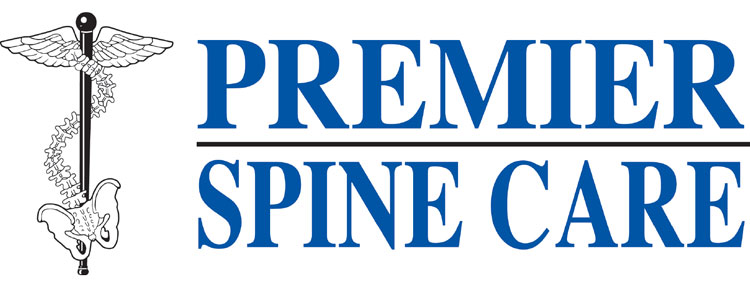Frequently Asked Questions
WHAT ARE COMMON CAUSES OF LOW BACK PAIN?
Back pain is one of the most common reasons to visit a doctor. Approximately 80-90% of the adult population will develop a significant episode of back pain sometime during their life. Fortunately, most of these episodes will spontaneously resolve. However, approximately 10% to 20% will develop into significant chronic and/or recurrent episodes of back pain. The reasons for these chronic issues can be multi-factorial. Genetics, diet, exercise, smoking, and general activity can all influence how our backs wear and tear over time. Muscle strains and pains may also cause low back pain, but usually the symptoms from these causes are short-lived. For those individuals who suffer from chronic pain in their lower backs, spine surgical consultation can be an option to help improve those symptoms.
ARE ALL BULGING DISCS AND/OR HERNIATED DISCS PAINFUL?
Many people will eventually have discs that are degenerative or abnormal and yet experience no symptoms. It is natural for the discs in our spine to develop wear and tear over time commonly described as “degenerative disc disease”. In many cases, these degenerative discs are not painful until some significant injury or trauma damages them further leading to significant instability, nerve root compression, and pain. It is important to remember that just because a disc appears abnormal on an MRI study does not mean it has to be painful. At Premier Spine Care, we believe in “TREATING the patient…NOT the picture”.
WHAT ARE SYMPTOMS OF A HERNIATED DISC?
A herniated, bulging, or protruding disc can all define a situation where the tough outer lining of the disc (spinal cushion) has been weakened or torn allowing the inner soft disc material to protrude or extrude out of the tear. This can often result in pressure on the nerve roots resulting in “sciatica” or leg pain which can be accompanied by pain, numbness and weakness.
WHAT IS SPINAL STENOSIS?
Spinal stenosis is a general term used to describe narrowing within the spinal canal. In this condition, if the spinal canal is narrowed to a degree where the spinal cord and/or nerve roots are compromised, symptoms such as pain, numbness/tingling, or weakness can occur. Spinal stenosis can result from a combination of disc bulging, hypertrophy or enlargement of the facet joints, and/or thickening of a ligament that covers the spinal canal and nerves. This condition can affect single or multiple nerve roots in the spine. The symptoms are commonly aggravated by standing and walking and can sometimes be relieved or improved by bending or flexing forward which helps open up the areas around the compressed nerves.
WHAT IS LUMBAR INSTABILITY OR SPONDYLOLISTHESIS?
Lumbar instability or spondylolisthesis can occur when the supporting ligaments, discs and joints of the spine are damaged or weakened to the point they can no longer hold the spine in alignment. As the vertebrae slip out of alignment, they can pinch nerves and cause significant back pain, leg pain, numbness, and weakness. The abnormal motion puts increased stress on the spine which can cause chronic or recurring symptoms. Treatments can include physical therapy, medications, activity modifications, and spinal injections. If symptoms remain or become chronic, spinal fusion surgery may be necessary to stabilize the instability or slippage and improve symptoms.
WHY IS IT MORE COMMON TO NEED A FUSION WITH A CERVICAL SPINE SURGERY?
The main difference between the surgical approach for the cervical spine as compared to that of the lumbar spine is the proximity of the spinal cord. The cord ends in the upper portion of the lumbar spine which allows access for certain types of lumbar surgery without the need for a fusion. In the cervical spine, access is limited by the need to avoid contact with the spinal cord. Since the pathology is almost always on the front side of the canal, the only safe way to access this area is by removal of the disc. This necessitates placement of a bone graft spacer (fusion), or an artificial disc when appropriate.
HOW LONG IS THE RECOVERY FROM A CERVICAL FUSION
The surgery is typically performed as an outpatient and takes between an hour and two hours depending on the number of disc levels involved. Return to work is usually allowed when the wound is healed. Limitations as a result of the spine procedure are temporary and dictated largely by symptoms rather than concern that the surgical area will be damaged. At about three months following surgery all restrictions are lifted and there are no permanent restrictions or limitations imposed.
AM I A CANDIDATE FOR AN ARTIFICIAL DISC REPLACEMENT?
There are specific criteria for successful placement of an artificial disc. If you meet the appropriate criteria for long term success with this procedure, then this may be an option. We are very careful not to place an artificial disc when the chance of failure is unreasonable. Your surgeon can review the options with you and together you can make the most appropriate treatment choice.
ARE THERE LONG-TERM LIMITATIONS AFTER A CERVICAL SURGERY?
Cervical spine surgery is most often well tolerated and far less traumatic than most patients expect. Once the initial post-operative period is over (typically 3 months), all restrictions are lifted and a return to normal activities is anticipated. Every patient’s situation is considered individually, but even a return to contact sports is usually allowed.
WHAT ARE YOUR THOUGHTS ON CHIROPRACTIC AND PHYSICAL THERAPY?
We are big proponents of exhausting your conservative treatment options prior to considering surgery. Treatment of your spine condition is a team sport which will often involve multiple physicians, your chiropractic physician, and a physical therapist. You are not only the patient, but also a part of your treatment team. Many of the treatment options are just that, options, and most decisions are driven by quality of life considerations. We encourage you to be an active participant in your treatment.
Patient Forms
– Dr. Ciccarelli and Dr. Jackson
